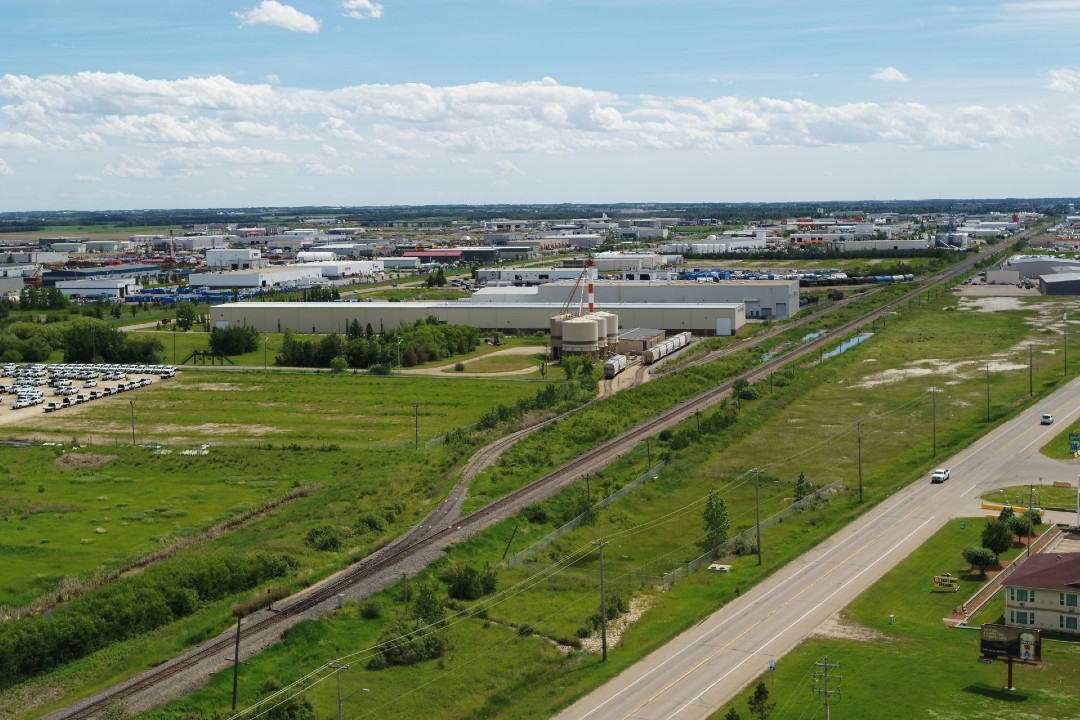Bussiness
Vancouver and Toronto companies relocating to Edmonton region

Several industrial companies from Canada’s biggest cities are relocating to the Edmonton region.
Gregg Maimann, senior vice-president of industrial sales and leasing at commercial real estate firm CBRE, told Taproot that at least five companies from Vancouver and the Greater Toronto Area (GTA) have recently moved part or all of their operations to the region. Maimann said he couldn’t share specific companies but did share that a “major tire company” and a “wholesale plumbing and construction materials distribution company” are among the new arrivals.
Vancouver companies find the Edmonton region attractive because the Lower Mainland is running out of developable land, Maimann said. “(Vancouver is) bordered by the mountains, the ocean, and then a large agricultural ‘do-not-touch area’ that cannot be developed,” he said.
He added that he feels both Vancouver and Toronto have less business-friendly governments than those in the Edmonton region. “In the GTA, because of the time and the bureaucracy that it takes to develop a building, it can account for kind of up to 30% of the cost and the time to develop a property,” he said. “Although we’re not perfect here, we’re certainly far better than the Vancouver area and … the GTA.”
Land is also cheaper here, Maimann said. Companies can find fully-serviced industrial land for $600,000 per acre in the Edmonton region, while similar land can cost up to $5 million per acre in the Lower Mainland and up to $3 million per acre in the GTA, Maimann said.
Many of the companies relocating to the region are choosing to do so south of Edmonton rather than within the city’s boundaries, Maimann said. He said that could be explained by the soil in the industrial areas. “The greater Edmonton area has a diverse supply of land and a diverse geotechnical makeup of that land. The geotechnical quality, or how receptive it is to load-bearing structures, how well you can build on it, and what you have to do or don’t do to it, varies greatly.”
For example, land in Leduc and Nisku tends to be made up of low plastic clay, meaning it doesn’t absorb moisture readily and it’s easier to build on. Meanwhile, on the west side of Edmonton for example, the soil tends to have more peat, which must be removed before building. “There’s areas around west Edmonton, and out towards Spruce Grove, where you’ll see big tracts of land (and wonder), ‘How come there’s no houses or buildings or anything?’ That’s because it’s undevelopable. It just doesn’t pencil out financially to remove all of that peat moss and bring in fill,” Maimann said. “You can’t make a dollar at it.”
Historically, much of the region’s industrial land has been dominated by oil and gas companies. Maimann said the industries investing to develop land are becoming more diverse. “With the advent of internet sales and web-based distribution … Amazon has four different locations here in Edmonton, and probably totals upwards of seven million square feet themselves of distribution space,” he said.
The trend of industrial businesses choosing to locate outside of Edmonton’s city limits can be a boon for some municipalities but a challenge for others. For the City of Edmonton, it poses a significant financial problem, the city’s administration noted at a June 19 executive committee meeting. Edmonton generates more tax revenue from industrial and commercial properties than it does from residential properties, but the city’s tax base is composed of 78% residential properties and 22% non-residential properties. Most other municipalities in the region have roughly 60% of their tax base made up of residential properties and 40% of non-residential. Fifteen years ago, 72% of the region’s industrial properties were located within Edmonton. Today, that number has fallen to 60%. During the executive committee meeting in June, Mayor Amarjeet Sohi expressed concern with the situation. “We need to get ahead of it. We have lost too much ground on this,” Sohi said.
As Taproot recently reported, the growing investment in industrial land south of Edmonton is also prompting a residential building boom there, according to BILD Edmonton Metro, a regional real estate industry association.
Photo: Several industrial businesses are relocating to the Edmonton region, especially to Leduc, pictured here, and Nisku. (City of Leduc)










:max_bytes(150000):strip_icc():focal(749x0:751x2)/taylor-swift-toronto-tout-112324-a65a2f3173b044cba3f8a53be0450471.jpg)